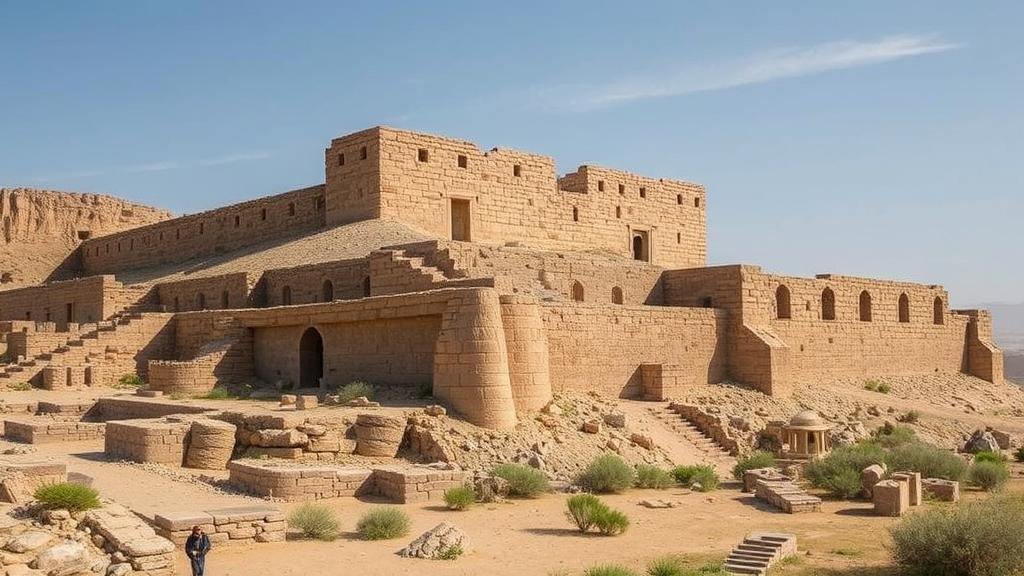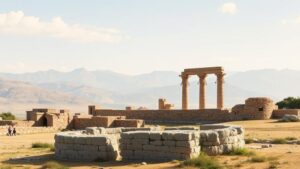Searching for hidden fortresses of the Seleucid Empire in Central Asia.
Searching for Hidden Fortresses of the Seleucid Empire in Central Asia
The Seleucid Empire, established by one of Alexander the Greats generals, Seleucus I Nicator, in the aftermath of his conquests, spanned a vast territory from the Aegean Sea to the Indus River. One of the less explored yet captivating aspects of this ancient empire is its fortifications, particularly those located in Central Asia. This article delves into the significance, historical context, and ongoing efforts to uncover the hidden fortresses of the Seleucid Empire in this region.
The Legacy of the Seleucid Empire
The Seleucid Empire was founded in 312 BC and lasted until around 63 BC. At its height, it controlled a significant portion of the Near East, characterized by a blend of Greek and Persian cultures. Within its expansive territory, numerous fortifications were built to provide defense against rival territories and to control trade routes.
One notable example is the city of Antioch, which served as a key military and administrative hub. But, the north-eastern frontiers of the empire were equally important, where Central Asia played a crucial role as a crossroads of trade and military movement.
The Importance of Central Asia
Central Asia comprises several modern-day countries, including Uzbekistan, Turkmenistan, and Kazakhstan, regions that were vital to the Silk Road trade network. Seleucid Empire recognized the strategic importance of this area, leading to the establishment of forts and fortified cities to secure their influence and trade routes.
Key locations in Central Asia where Seleucid fortifications are believed to exist include:
- The ancient city of Bactra (modern-day Bukhara, Uzbekistan)
- The site of Samarkand, an essential urban center during the Seleucid period
- The remnants of Ai Khanum, located along the border with Afghanistan
Uncovering the Hidden Fortresses
Recent archaeological efforts have sought to uncover the hidden fortresses attributed to the Seleucid Empire in Central Asia. Researchers have employed modern techniques such as satellite imaging, ground-penetrating radar, and on-site excavations to locate these ancient strongholds.
For example, excavations at Ai Khanum have revealed extensive fortifications, including walls built with a mixture of sun-dried mudbrick and stone. This site also produced artifacts that dated back to the Seleucid period, including pottery and coins, which offer insights into the lifestyle and economics of the time.
Challenges in Archaeological Research
Despite the advancements in technology and methodology, several challenges hinder archaeological research in Central Asia:
- Political instability in some region
- Lack of funding for historical preservation
- Environmental conditions that can erode ancient sites
Also, the remote locations of many fortresses complicate access and excavation logistics. Researchers often face significant obstacles, from extreme weather conditions to logistical challenges in transporting materials and personnel to remote sites.
Conclusion and Actionable Takeaways
The search for the hidden fortresses of the Seleucid Empire in Central Asia represents a merging of history, archaeology, and cultural heritage. As ongoing research continues to shed light on these significant historical sites, a better understanding of the empires influence on Central Asia can be achieved.
For history enthusiasts and aspiring archaeologists, there are several ways to engage with this fascinating subject:
- Stay informed about archaeological discoveries through academic journals and publications.
- Support local and international archaeological efforts aimed at preserving historical sites.
- Consider participating in volunteer archaeology programs that offer field experience in Central Asia.
In summary, uncovering the fortresses of the Seleucid Empire not only enhances our understanding of ancient military architecture and strategies but also preserves the rich historical tapestry of Central Asia, providing lessons for both present and future generations.

